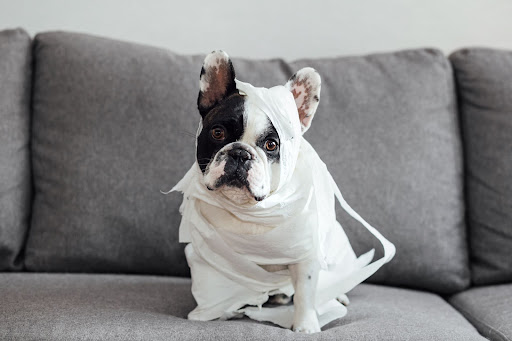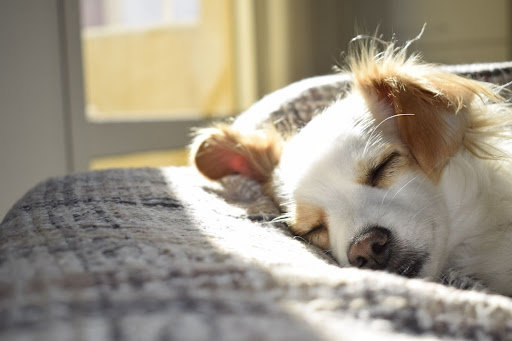Does your dog have separation anxiety when you leave the house or when they are away from you? This issue is all too common - especially as many dog owners are heading back to the office full time. Our dogs have gotten used to having us around 24/7, so it’s understandable that our leaving them will feel a bit out of the ordinary.

Separation anxiety can be triggered by different circumstances:
- A change in routine - like returning to the office after a long or short break
- A change in schedule - maybe you are no longer able to come home during your lunch break
- A new guardian or family - perhaps you’ve just adopted a dog who was surrendered by their previous family. That is a lot of change!
- Moving or packing to move - New surroundings can take some time to get used to. Dogs can even sense when you are preparing to move to a new home.
What does separation anxiety in dogs look like? Every dog may exhibit different behaviors, but common symptoms are:
- Barking or howling
- Destruction or chewing
- Peeing or pooping in the house
- Panting
- Pacing
- Escaping

Credit: Pexels
How can you help ease separation anxiety in your dog? Here are some simple practices to make a habit:
Desensitize your dog to triggers
- Have you noticed your dog’s reaction when you touch the door handle, grab your keys, or put on your coat or shoes? They probably take notice and get up to see what you’re doing. They have become conditioned to expect you to leave when you do any of these actions. When you don’t plan on leaving the house, try incorporating these actions as you are moving around. Touch the doorknob, grab your keys, or put on and take off your coat. Then go back to what you were doing. This helps your dog get used to these triggers and will help them keep calm when it’s actually time for you to leave the house
Gradual exposure
- Help your dog learn that you will come back by training with gradual exposure. Crate your dog or put them somewhere they will be safe. Then leave the room. They will probably bark, pace, or pant. Once you hear them be quiet for just a second, calmly walk back inside the room and mark the behavior with a treat. Play with them for a few minutes, and repeat the process. Your dog will learn the following: 1) you will come back, and 2) becoming calm will get you to come back, not barking.
Preparing to leave
- It’s totally normal for a dog owner to want to say goodbye to their dog when leaving them house. Unfortunately, this only tells your dog that you think it’s a big deal that you’re leaving, and they should think so too. You want to show your dog that it’s okay for you to leave the house. Do this by calmly getting ready to leave. Avoid eye contact or touch (we know, it’s so heartbreaking). Disturb them as little as possible as you slip out the door.
Returning home
- Just as we want your dog to know it’s not a big deal that you left the house, you also want them to know it’s not a big deal that you came home. Do this by calmly returning to your home and waiting until they have settled by sitting or lying down before you greet them.
Give them exercise and engagement
- Make sure your dog is well-exercised before you leave, and have opportunities for stimulation and engagement while you’re gone. Take them on a walk or play fetch before you head out. You can give them something to do by filling a Kong with peanut butter and treats, giving them a treat puzzle, or putting on TV for dogs (it’s a real thing… just search it on YouTube).
Preventing separation anxiety in dogs
Even if your dog doesn’t display symptoms of separation anxiety yet, you can help prepare them for any change in their schedule or surroundings by practicing these tips with them.
If your dog is displaying severe separation anxiety symptoms or doesn’t respond to these tips, it’s always best to seek professional advice from a trainer and/or behaviorist.

